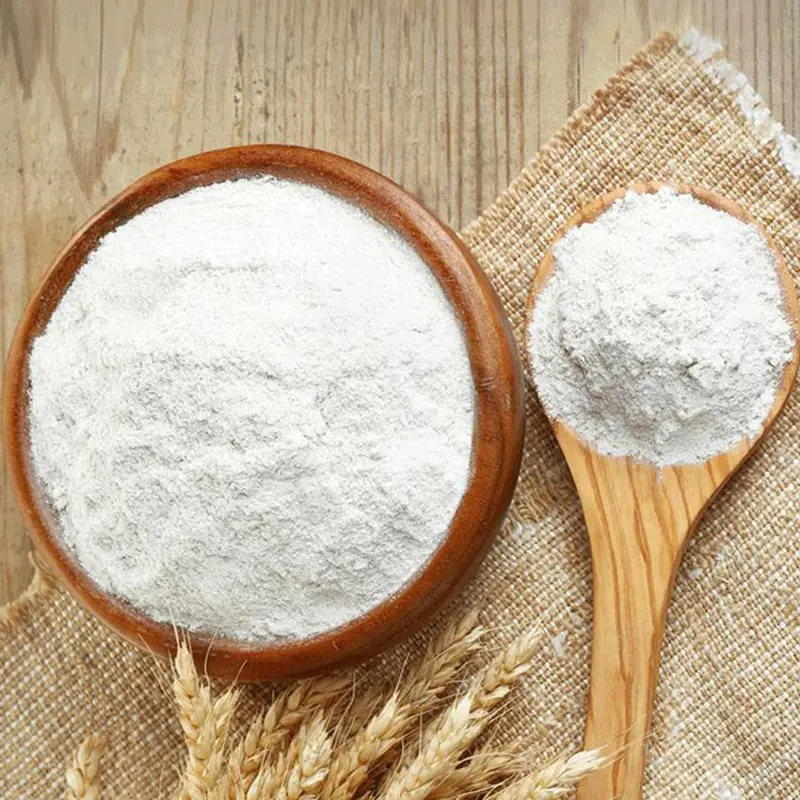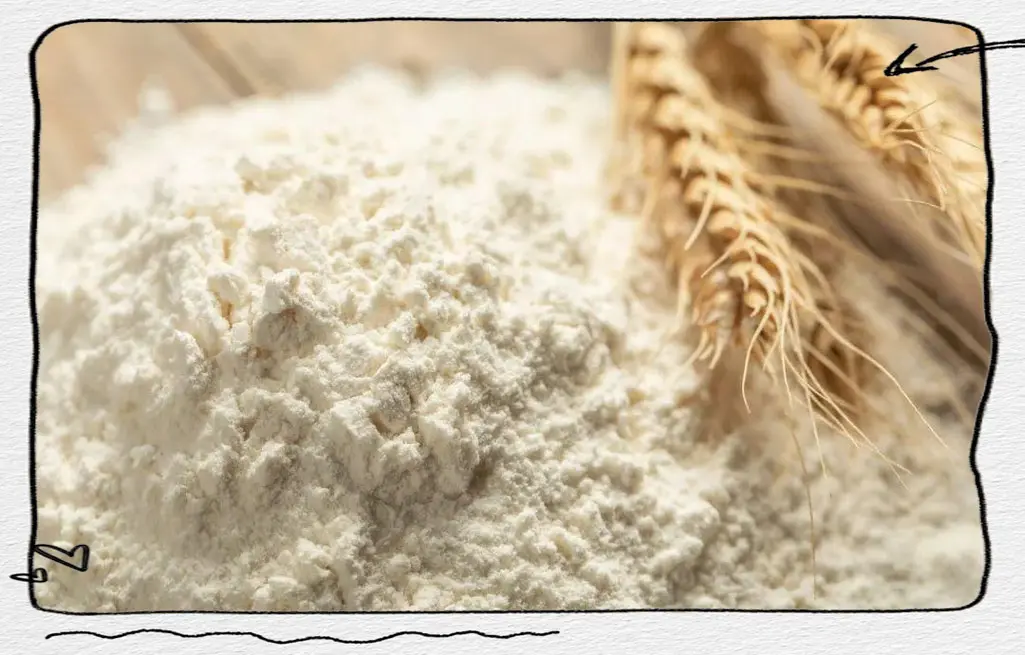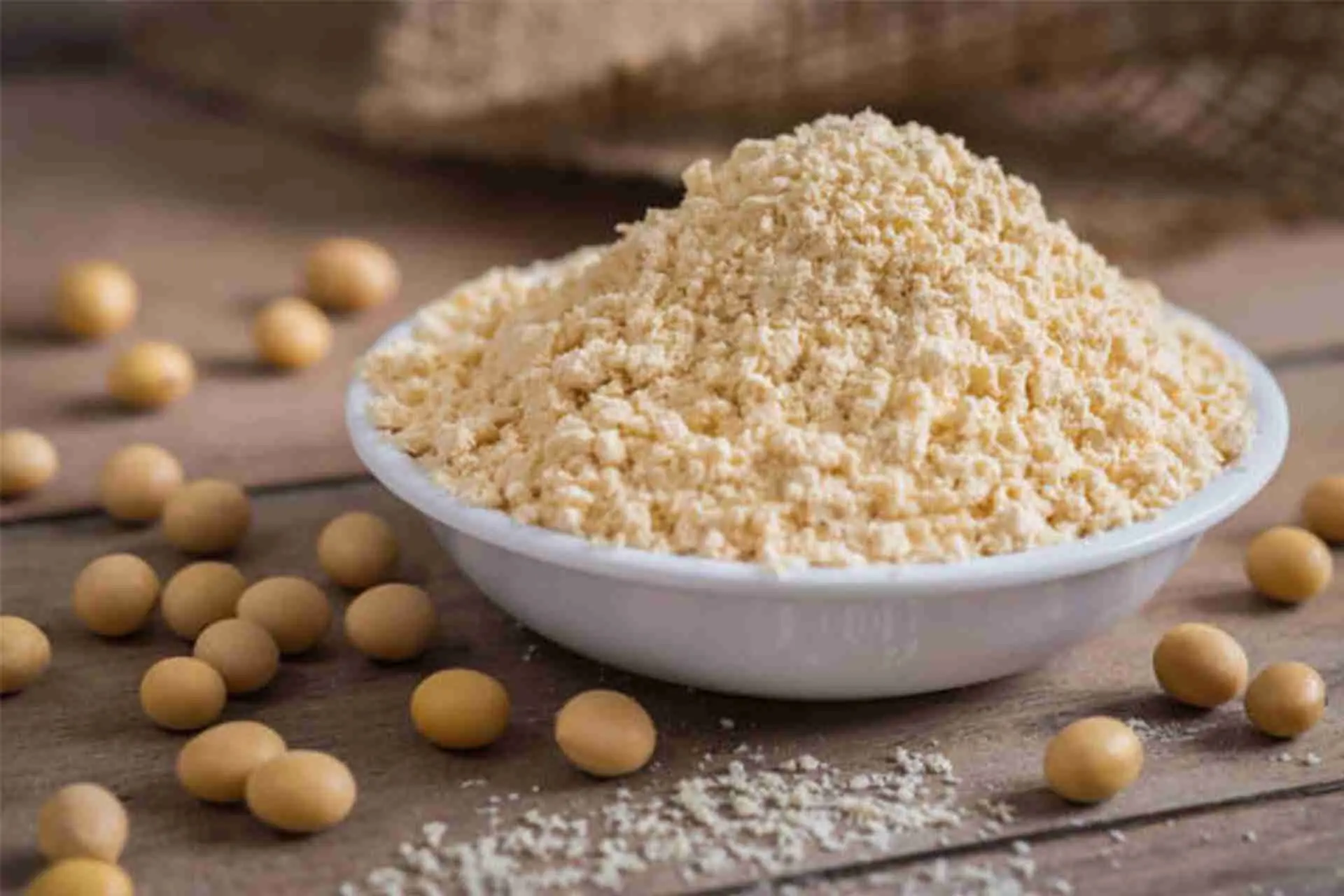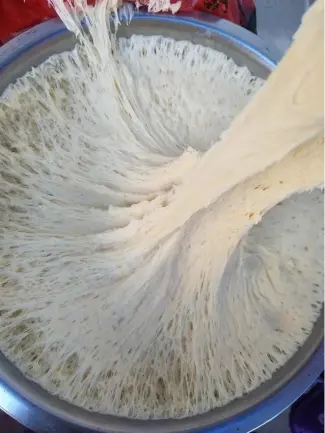Types and Functional Analysis of Flour Lydia
Types of flour
According to the protein content, we usually divide flour into three categories:
1.High-gluten flour (strong-gluten flour, high-protein flour or bread flour): protein content is 12%-15%, wet gluten weight>35%. High-gluten flour is suitable for making bread, puff pastry, puff and shortbread, etc.

2.Low-gluten flour (weak-gluten flour, low-protein flour or biscuit flour): protein content is 7%-9%. Wet flour weight <25%. Low gluten is suitable for making cakes, biscuits, mixed pastries, etc.
3.Medium-gluten flour (general-purpose flour, medium-protein flour): It is a type of flour between high-gluten flour and low-gluten flour. The protein content is 9%-11%, and the wet gluten weight is between 25% and 35%. Medium-gluten flour is suitable for making fruit cakes and can also be used to make bread.
4.Special flour: It is flour that is specially formulated to produce special food corresponding to food with flour as raw material.
5.Premixed flour: It is flour that is premixed with flour, sugar, powdered oil, milk powder, improver, emulsifier, salt, etc. according to the recipe of baked products. The sponge cake premix, cookie premix, and muffin premixsold on the market are of this type.
6.Whole wheat flour: It is ground from whole wheat, including germ, most of the bran and endosperm. The bran and germ are rich in protein, cellulose, vitamins and minerals, and have high nutritional value.

Processing properties of flour
1.Starch properties. In fermented dough, the starch in flour is converted into sugar under the action of amylase and saccharifying enzyme, which can provide nutrients for yeast fermentation, thereby improving the ability of dough fermentation to produce gas. The ability of starch in flour to convert into sugar is called the saccharification power of flour. Under the same conditions, the stronger the saccharification power of flour, the more nutrients it provides to yeast, the more gas the dough produces, and the larger the volume of bread produced. In the baking process, the role of starch is also very important. When the center temperature of the dough reaches 55℃, yeast will accelerate the activation of amylase, the saccharification power of flour will accelerate, and the dough will become soft. At this time, starch absorbs water and gelatinizes, and together with the reticular gluten, it forms the organizational structure of baked products.
2.The performance of protein.
The water absorption process of protein and the performance of the gluten formed by it are of great significance in the baking process. When preparing the dough, the gluten formed by the protein absorbing water makes the dough soft, elastic, tough and extensible. When the dough is fermented, due to the reticular structure formed by the gluten, when the yeast spits out carbon dioxide gas, the extensibility of the reticular gluten forms a membrane containing bubbles, which resists the expansion of the gas and prevents the gas from overflowing. The yeast continues to produce gas, making the dough gradually larger.
3.The performance of other chemical components In addition to starch and protein, flour also contains soluble sugars, cellulose, fat, enzymes, inorganic salts, vitamins, etc. These chemical components will also have a certain impact on the baking process.
(1) Soluble sugars: Soluble sugars in flour include sucrose, maltose and glucose. Although the content is not high, they can serve as nutrients for yeast during dough fermentation and are beneficial to the formation of color, aroma and taste of the product.
(2) Cellulose: It is mainly found in wheat bran. The presence of a certain amount of cellulose is beneficial to gastrointestinal motility and promotes the digestion and absorption of food by the human body. Hemicellulose has the function of enhancing dough strength and preventing product aging.
(3) Fat: The fat content in flour is only 1-2%. Lipids in endosperm are an important part of gluten formation. Among them, lecithin is a good emulsifier, which can make the product texture delicate and soft and has anti-aging effects.
(4) Enzymes: The enzymes in flour are mainly amylase, protease and lipase.
Enzymes are proteins, and amylase and protease have a greater impact on the baking process. Amylase can convert starch into maltose and glucose in fermented dough, provide energy for yeast fermentation, and greatly improve the quality of bread during baking. The decomposition of proteases can soften flour and reduce the processing properties of flour.
During the mixing and fermentation process, the gluten strength is reduced, which helps the gluten to fully expand and shorten the dough kneading time. The decomposition of lipase in flour storage can easily cause the flour to become rancid, reducing the quality of the flour.
Application of flour
1.Bread:
Bread should use special bread flour with a protein content of 12-15% and a wet gluten content of about 35%.
2.Mixed pastry and crispy dry pastry:
It is advisable to use flour with a protein content of 7-9% and a wet gluten content of <25%.
3.Cake:
It is advisable to use flour with a protein content of 7-9% and a wet gluten content of <25%.
4.Clear pastry:
It is advisable to use flour with a protein content of 10-12% and a wet gluten content of about 30%.
Contact
Arkera Inc.
Email: info@cnbreading.com
WhatsApp: +86 136 8369 2063









